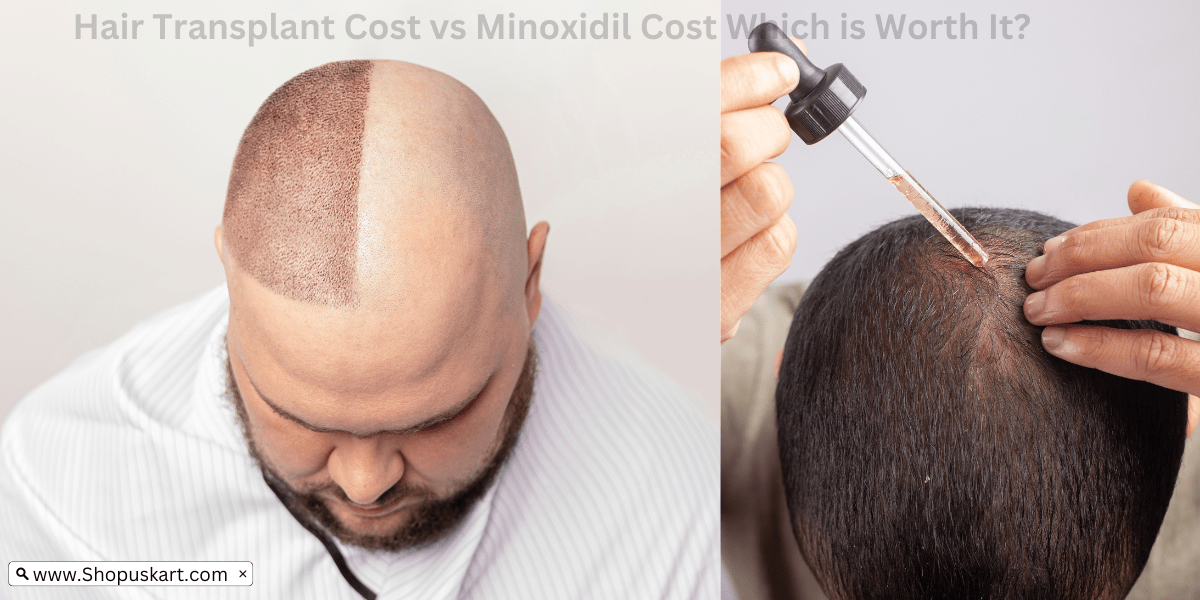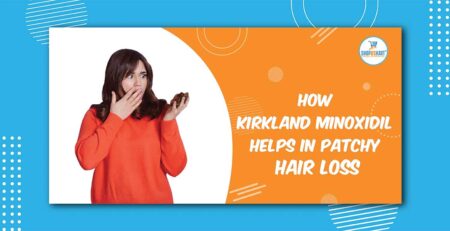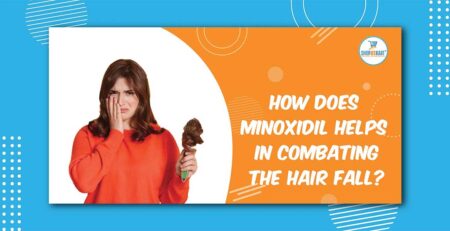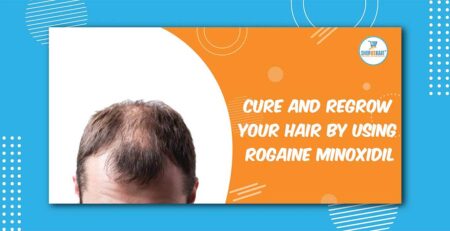Hair Transplant Cost vs Minoxidil Cost Which is Worth It?
Hair Transplant Cost vs Minoxidil Cost Which is Worth It?🤑
Are you tired of spending a fortune on hair products that promise results but fall short? Perhaps it’s time to explore more long-lasting solutions. In the battle against hair loss, two options have emerged as frontrunners: hair transplants and minoxidil treatments. But which one truly delivers value for your hard-earned money? Today, we dive deep into the realms of cost and effectiveness to help you make an informed decision. Buckle up as we unravel the mystery behind Hair Transplant Cost vs Minoxidil Cost – because finding that perfect solution for your crowning glory should be worth every penny!
Introduction to hair loss and its impact on self-esteem👱♂️
Introduction:
Hair loss, also known as alopecia, is a common condition that affects both men and women. While it is often associated with aging, it can occur at any age and can be caused by various factors such as genetics, hormonal changes, and medical conditions.
Not only does hair loss have physical implications on an individual’s appearance, but it also has a significant impact on their self-esteem. Studies have shown that hair loss can lead to anxiety, depression, social isolation, and even low self-confidence.
In this section of the blog post, we will delve into the concept of hair loss and how it can impact one’s sense of self-worth.
Understanding Hair Loss:
Hair grows in cycles – anagen (active growth phase), catagen (transitional phase), telogen (resting phase), and exogen (shedding phase). On average, humans lose 50-100 hairs from their scalp daily. However, when this normal shedding process is disrupted or hair follicles shrink due to certain factors like genetics or hormones, it can result in excessive hair loss.
Common types of hair loss include male pattern baldness or Androgenetic Alopecia which affects more than 50% of men over the age of 50; female pattern baldness which typically results in thinning of the hair all over the head; and alopecia areata which causes patchy hair loss on the scalp or other areas of the body.
Impact on Self-Esteem:
For many individuals who experience hair loss, losing their once-thick mane can be an emotional journey full of ups and downs. It affects how they look at themselves and how others perceive them. In a society where attractiveness is highly valued, having a full head of hair is often associated with youthfulness and confidence.
Research has shown that those who suffer from hair loss experience negative emotions such as shame, embarrassment,
and distress due to societal expectations and stereotypes. They may feel less attractive, making it difficult for them to socialize or engage in activities they once enjoyed, leading to a decline in self-esteem.
Furthermore, hair loss can also affect one’s professional life. Studies have found that individuals with visible signs of hair loss are often perceived as less competent and successful compared to those with a full head of hair. This can lead to barriers to career advancement and opportunities.
Conclusion:
Hair loss is not merely a physical condition but has significant impacts on an individual’s mental well-being. It can cause emotional distress, low self-esteem, and hinder personal and professional growth. Therefore, it is essential to address the issue of hair loss both physically and emotionally through effective treatments that will help restore not only the appearance but also the confidence of individuals suffering from this condition.
Understanding the difference between a hair transplant and minoxidil treatment
One of the most common solutions for hair loss and thinning hair is a hair transplant or minoxidil treatment. While both methods aim to restore hair growth, they work in different ways and it’s important to understand the differences before deciding which option is best for you.
Hair Transplant:
A hair transplant is a surgical procedure where healthy hair follicles are taken from one part of the scalp (usually the back or sides of the head) and transplanted into areas that are balding or experiencing hair thinning. It is typically used to treat male pattern baldness, but can also be used for other types of hair loss. The surgery involves carefully placing individual grafts onto the scalp to create a natural-looking result.
One major advantage of a hair transplant is that it provides long-term results. Once the transplanted hairs have fully grown, they will continue to grow naturally and no maintenance or additional procedures are necessary. This makes it a cost-effective option in the long run as compared to other treatments.
However, it is important to note that a hair transplant can be expensive and may not be suitable for everyone. The cost varies depending on factors such as the extent of hair loss and the complexity of the procedure, but on average, it can range from $4,000 to $15,000. Additionally, it requires some downtime for recovery and there may be some scarring at the donor site.
Minoxidil Treatment:
On the other hand, minoxidil (commonly known by its brand name Rogaine) is a topical solution applied directly onto the scalp twice daily. It works by increasing blood flow to the scalp which promotes new hair growth. Minoxidil has been approved by the FDA as an over-the-counter treatment for male pattern baldness.
Compared to a hair transplant, minoxidil treatment has several advantages including affordability (a 3-month supply typically costs around $40), convenience and ease of use. It is also suitable for both men and women experiencing hair loss.
However, it’s important to note that minoxidil is not a one-stop solution for all types of hair loss. It may not work for everyone and results may vary from person to person. It also requires consistent and ongoing usage to maintain the results. Additionally, some users may experience side effects such as scalp irritation or unwanted hair growth in other areas of the body.
While both a hair transplant and minoxidil treatment aim to restore hair growth, they have distinct differences in terms of cost, effectiveness, and method of application. For individuals looking for a permanent solution with minimal maintenance, a hair transplant may be worth the higher cost. On the other hand, those who prefer a more affordable and non-invasive option can opt for minoxidil treatment. Ultimately, it is best to consult with a trusted medical professional to determine which option would be most suitable for your specific needs.
Pros and Cons of a Hair Transplant:
A hair transplant is a surgical procedure that involves removing hair follicles from one part of the body (typically the back or sides of the head) and transplanting them into areas with thinning or balding hair. While it is considered to be the most effective solution for permanent hair restoration, it is important to consider both the pros and cons of this procedure before making a decision.
Pros:
1. Permanent Solution:
One of the primary benefits of a hair transplant is that it offers a permanent solution for restoring lost hair. The transplanted hair follicles are resistant to DHT (dihydrotestosterone), which is responsible for causing male pattern baldness. This means that once the transplanted hairs start growing, they will continue to do so for life.
2. Natural-looking Results:
Unlike other temporary solutions such as wigs or extensions, a hair transplant provides natural-looking results that mimic your natural hair growth pattern. The transplanted hairs blend in seamlessly with your existing hair, making it virtually impossible to tell that you have had a procedure done.
3. Low Maintenance:
After a successful hair transplant, there is no need for any special maintenance or care routines. You can treat your new transplanted hair just like you would treat any other regular hair on your head – washing, styling, cutting, etc.
4. Cost-effective in the long run:
While initially more expensive than other non-surgical methods such as minoxidil, in the long run, a hair transplant can prove to be more cost-effective. As it provides permanent results, there is no need for continual expenses on products or treatments.
Cons:
1. Initial Cost:
The cost of a hair transplant can vary depending on factors such as the extent of baldness and the number of grafts required. It may seem expensive compared to other non-surgical options such as minoxidil, making it unaffordable for some individuals.
2. Risk of Complications:
As with any surgical procedure, there is always a risk of complications such as bleeding, infection or scarring. However, these risks are minimized when the procedure is performed by a qualified and experienced surgeon.
3. Healing Time:
The healing time after a hair transplant can be longer than other hair restoration methods. It may take several weeks for the transplanted hairs to settle in and start growing, and up to 6 months for the full results to be visible.
4. Limited Donor Area:
In cases where an individual has extensive hair loss or thinning in different areas of the head, there may be a limited supply of donor hairs available for transplantation. In such cases, multiple procedures may be required to achieve desired results.
While a hair transplant offers many benefits as a permanent solution for hair loss, it also has its limitations and potential drawbacks that should be carefully considered before making a decision. Consulting with a qualified professional and weighing all options carefully can help you make an informed
– Cost considerations
Cost considerations are an important factor to consider when deciding between getting a hair transplant or using minoxidil for hair loss treatment. It is natural to want the most effective and affordable option, but it is essential to thoroughly evaluate the costs of each treatment before making a decision.
Hair transplant costs can vary greatly depending on various factors such as the extent of hair loss, the technique used, and the clinic you choose. On average, the cost of a quality hair transplant can range from $4,000 to $15,000. This may seem like a significant amount compared to the cost of minoxidil, but it is crucial to remember that this is a one-time expense that provides permanent results.
In contrast, minoxidil requires ongoing use for maintenance and results in recurring costs. The price of minoxidil varies depending on brand and quantity but typically ranges from $30-$60 per month. Over time, these expenses add up and may even surpass the initial cost of a hair transplant.
Another factor to consider is the effectiveness of each treatment option. While both hair transplants and minoxidil have been shown to effectively treat hair loss in different ways, it’s essential to understand that they work differently.
Minoxidil is applied topically and stimulates blood flow in the scalp area where it is applied. This helps prolong the growth phase of hair follicles resulting in fuller-looking hair over time. However, if stopped using minoxidil regularly as directed by your doctor, its effects will eventually wear off, leading to further thinning or baldness.
On the other hand, a hair transplant procedure involves surgically removing healthy hairs from one part of your head (usually at the back) and implanting them onto areas where there is thinning or balding. These implanted hairs are genetically resistant to DHT (the hormone responsible for male pattern baldness), making them unlikely to fall out again. Therefore, unlike minoxidil, a hair transplant provides permanent results, saving you from potential ongoing costs in the future.
Additionally, a hair transplant also eliminates the need for ongoing maintenance after the initial recovery period. This means no additional expenses or time-consuming daily routines like applying minoxidil.
While the cost of a hair transplant may seem high compared to using minoxidil, it is essential to consider the long-term benefits and savings it offers. A one-time expense may outweigh the recurring costs of minoxidil in the long run. Ultimately, it’s up to each individual to make an informed decision based on their budget and desired outcome.
– Duration of results
The duration of results is a crucial factor to consider when comparing the cost of a hair transplant and minoxidil treatment. It directly impacts the value and worth of both options.
A hair transplant typically provides permanent results, as it involves transplanting healthy hair follicles from one part of the scalp to the thinning or balding areas. This means that once the transplanted hairs have fully grown, they will continue to grow for a lifetime, just like your natural hair. This makes it a long-term investment that eliminates the need for ongoing treatments or maintenance costs. Therefore, while initially more expensive than minoxidil treatment, a hair transplant can potentially save you money in the long run by providing lasting results.
On the other hand, minoxidil is a topical solution that needs to be applied consistently for it to be effective. Once you discontinue its use, any new hair growth may fall out within 3-4 months. This means that you would need to continue using it indefinitely if you want to maintain your results. As such, this can add up over time and become a significant ongoing expense.
Moreover, minoxidil only produces positive effects on specific individuals with certain types of baldness patterns. If someone has already experienced extensive hair loss or has large bald patches on their scalp, then minoxidil might not work effectively for them at all.
It’s essential to understand that although minoxidil can help regrow lost hair in some people temporarily, it does not stop genetic pattern baldness from continuously progressing over time. This means that even though there may be some initial benefits from using this treatment option, eventually individualized areas may require further treatments or result in visible patchiness due to progressive thinning around treated areas.
In contrast, since a hair transplant utilizes your healthy follicles from other parts of your head (typically at the back and sides), they do not fall prey to hereditary hair loss. Therefore, new hair growth should remain intact and unaffected by pattern baldness.
The duration of results is a crucial consideration when deciding between a hair transplant and minoxidil treatment. While both options may have initial costs, the long-term value of investing in a hair transplant and not having to incur ongoing expenses or maintenance can make it ultimately more worthwhile than opting for minoxidil treatment in the long run.
– Potential risks and side effects
When it comes to deciding on hair loss treatments, one important factor that must be taken into consideration is the potential risks and side effects. While both hair transplant surgery and using minoxidil (also known as Rogaine) are popular options for treating hair loss, they come with their own set of potential risks and side effects.
Hair transplant surgery is a surgical procedure where healthy hair follicles are removed from a donor site on the scalp and transplanted onto areas of thinning or balding. This option has become increasingly popular due to its ability to provide long-term, natural-looking results. However, like any surgical procedure, there are potential risks involved.
One of the main risks associated with hair transplant surgery is infection. Since small incisions are made on the scalp during the procedure, there is a risk of bacteria entering these openings and causing an infection. To minimize this risk, it is important to choose a skilled and reputable surgeon who follows proper sterilization protocols.
Another potential risk of hair transplant surgery is scarring. While advancements in technology have led to less visible scarring compared to traditional methods, there is always a possibility of scarring after any surgical procedure. This can be especially concerning for those who prefer shorter hairstyles.
In addition to these risks, some people may also experience temporary swelling or bruising around the surgical sites after the procedure. There is also a chance for numbness or nerve damage in the scalp area where the follicles were transplanted.
On the other hand, minoxidil does not involve any type of invasive procedures but it still comes with its own set of potential side effects. Minoxidil works by increasing blood flow to the scalp and stimulating hair growth; however, it can cause irritation or itching at application sites for some individuals.
Another possible side effect of minoxidil usage is increased heart rate or rapid heartbeat which can be particularly concerning for those with pre-existing heart conditions. It is important to consult with a doctor before using minoxidil, especially if you have any underlying medical conditions.
Some other common side effects of minoxidil include dryness or flaking of the scalp, skin irritation, and in rare cases, hair shedding. These side effects are usually mild and subside over time as the body adjusts to the medication.
Ultimately, when considering between hair transplant surgery and using minoxidil for hair loss treatment, it is important to weigh both potential risks and side effects carefully. Consulting with a qualified medical professional can also help in making an informed decision that best suits your individual needs.
Pros and cons of minoxidil treatment
Minoxidil is a popular and effective treatment for hair loss, but like any other medication, it has its own set of pros and cons. In this section, we will discuss both the positive and negative aspects of using minoxidil as a hair loss treatment.
Pros:
1. Promotes hair growth: The main benefit of minoxidil is its ability to stimulate hair growth. It works by widening the blood vessels on the scalp, which increases blood flow and delivers essential nutrients to the hair follicles. This results in stronger and healthier hair growth.
2. Easy to use: Minoxidil is available in various forms such as foam, liquid, or spray, making it easy to incorporate into your daily routine. You can apply it directly onto your scalp without having to go through any complicated procedures.
3. Safe for most people: Minoxidil is generally safe for use by both men and women with varying degrees of hair loss. It does not require a prescription from a doctor; however, consulting with a healthcare professional before starting any new treatment is always recommended.
4. Affordable: Compared to other hair loss treatments such as surgical procedures or expensive shampoos, minoxidil is relatively affordable. It comes in different price ranges depending on the brand and type you choose, making it accessible for those on a budget.
Cons:
1. Initial shedding phase: One of the major drawbacks of using minoxidil is that it may cause an initial shedding phase when first starting treatment. This happens because old hairs are pushed out by new ones growing underneath them. However, this shedding phase should only last for a few weeks before new growth appears.
2. Long-term commitment: Minoxidil requires long-term usage for sustained results; once you stop applying it regularly, you may experience thinning or even regrowth reversals within six months.
3. Potential side effects: Although rare, some people may experience side effects such as scalp irritation, itching, or redness. These effects are usually temporary and subside once your body adjusts to the treatment.
4. Not effective for everyone: Minoxidil may not work for everyone. Some people may see significant results while others may not notice any improvement at all. It also works best on early stages of hair loss or thinning rather than complete baldness.
Minoxidil has proven to be an effective option for hair loss treatment with minimal side effects and affordable cost. However, it is important to consider both its pros and cons before deciding if it is the right option for you. Consult with a healthcare professional to determine the best course of action for your situation.
– Cost considerations
Cost is often one of the main concerns for individuals considering hair transplant surgery or starting a minoxidil treatment. Both options can be considered as long-term investments in achieving a fuller head of hair, but it is important to understand the cost considerations for each approach.
Hair transplant costs can vary greatly depending on factors such as the type of procedure, location, and surgeon’s experience. On average, a hair transplant can cost anywhere from $4,000 to $15,000. This may seem like a significant expense at first glance, but it is important to consider the long-term benefits and potential savings that come with this option.
One key factor to keep in mind when considering the cost of a hair transplant is that it provides permanent results. Unlike other treatments that may require continuous use or maintenance costs, once a hair transplant is performed successfully, there is no need for any additional procedures or products. This means that while the upfront cost may be higher than other options initially, over time it could end up being more cost-effective in comparison.
In addition to the long-lasting results of a hair transplant, there are also potential savings when it comes to ongoing expenses for things like hats or hairpieces used to cover up thinning areas. These added costs can add up over time and potentially surpass the initial investment in a hair transplant.
On the other hand, minoxidil – commonly known as Rogaine – has an average monthly cost between $25-$30 for both men’s and women’s formulas. While this may seem more budget-friendly compared to hair transplants at first glance, it is important to consider that minoxidil requires continuous usage to maintain its effects. This means potentially adding thousands of dollars in yearly expenses if not used indefinitely.
Another aspect to take into account with minoxidil costs is that not all individuals will respond equally well to the treatment. In some cases, minimal improvements or even negative side effects may occur, resulting in wasted money and time. It is also worth noting that some individuals may require higher concentrations of minoxidil for it to be effective, leading to further costs.
When considering the cost of hair transplantation versus minoxidil, it is crucial to take into account not only the initial expenses but also the long-term results and potential savings. While hair transplant surgery may have a higher upfront cost, its permanent and natural-looking outcomes can make it a worthy investment for those seeking a lasting solution for hair loss.
– Duration of results
The duration of results is an important factor to consider when deciding between a hair transplant and using minoxidil for hair loss treatment. Both options can be costly, so it’s essential to know how long the results will last before making a decision.
Hair transplants are known for providing permanent results. The procedure involves taking healthy hair follicles from one part of the scalp and transplanting them into areas with thinning or balding hair. These transplanted hairs will continue to grow just like natural hair, making them a long-term solution for treating hair loss.
However, it’s worth noting that the initial results of a hair transplant may not be immediately visible. It takes about three to four months for newly transplanted hairs to start growing continuously, with optimal growth seen within six to nine months post-surgery. Some patients may even experience continued improvement up to 18 months after their procedure.
This timeline can vary depending on individual factors such as age, overall health, and genetic predisposition. But on average, most patients see significant improvements in the appearance of their hair within one year after their transplant.
On the other hand, minoxidil typically provides temporary improvements in hair growth. This over-the-counter medication works by increasing blood flow and oxygen delivery to hair follicles, stimulating new growth in those areas. However, its effects only last as long as you continue using the product regularly.
Once you stop using minoxidil, your scalp will return to its previous state before treatment begins – meaning any regrown hairs may fall out. For this reason, minoxidil is considered an ongoing maintenance treatment rather than a long-term solution for hair loss.
The duration of results from both options highlights the difference between addressing the root cause of hair loss (hair transplantation) versus managing it (minoxidil). While minoxidil can produce initial improvements relatively quickly after starting treatment, these benefits are short-lived if regular use stops.
In contrast, hair transplants may require more patience and a larger initial investment. But in the long run, the results are well worth it, as you will have a fuller head of hair without the need for ongoing maintenance.
Ultimately, the duration of results is an essential consideration when comparing hair transplant costs vs. minoxidil costs. It’s crucial to weigh your expectations against your budget to determine which option is worth it for you.
– Potential risks and side effects
While both hair transplant and minoxidil treatments have been proven to be effective for hair loss, it is important to be aware of the potential risks and side effects that come with each option. It is always recommended to consult with a physician before making a decision on which treatment is best for you.
Hair Transplant:
Hair transplant surgery is a major procedure that involves extracting healthy hair follicles from one part of the scalp and grafting them onto areas where there is thinning or balding. Like any surgical procedure, there are inherent risks involved such as bleeding, scarring, and infection. In addition, some patients may experience temporary numbness or tingling in the affected area post-surgery.
One of the most commonly reported side effects of hair transplant surgery is shock loss, which occurs when transplanted hairs fall out within the first few weeks after surgery. This can be alarming for some patients, but it is a normal part of the healing process and new hairs will eventually grow back in those areas.
In rare cases, more serious complications such as nerve damage or unnatural-looking results can occur. It is crucial to choose a reputable and experienced surgeon to minimize these risks.
Minoxidil:
Minoxidil treatment comes in both topical solution and oral form. While it has been deemed safe by the FDA for treating hair loss, there are still potential side effects that users should be aware of.
Commonly reported side effects of minoxidil include dryness, irritation, and redness at the application site. Some individuals may also experience increased shedding during initial use.
In rare cases, more severe reactions such as swelling in the face or hands, rapid heart rate, difficulty breathing, or dizziness may occur. If experiencing any of these symptoms after using minoxidil, seek medical attention immediately.
It should also be noted that minoxidil only works as long as it is used consistently. If you stop using the product, your hair loss may resume.
Conclusion:
Both hair transplants and minoxidil treatments have their own set of potential risks and side effects. It is important to carefully weigh these factors before making a decision on which option is best for you. It is always recommended to consult with a medical professional who can assess your situation and provide personalized recommendations. Proper research and understanding of the potential risks and side effects can help you make an informed decision on which treatment option will be worth it for you in the long run.
Factors to Consider When Deciding Between a Hair Transplant or Minoxidil Treatment:🧑⚕️
When considering hair loss treatment options, two of the most popular and effective choices are hair transplants and minoxidil. However, choosing between these two can be a daunting task as both have their unique benefits and drawbacks. In this section, we will discuss some important factors that you should consider when deciding between a hair transplant or minoxidil treatment.
1. Severity of Hair Loss:
One of the first things you need to consider is the severity of your hair loss. If your hair loss is too severe, then minoxidil alone may not be enough to restore your full head of hair. In such cases, a hair transplant might be the better option as it involves the transplantation of healthy follicles from one part of your scalp to the balding areas. On the other hand, if your hair loss is in its early stages and there is still good density in certain areas, then minoxidil could help stimulate regrowth and prevent further thinning.
2. Cost:
Hair transplant procedures tend to be more expensive than using minoxidil consistently over time. This is because a single session for a hair transplant could cost thousands of dollars while purchasing minoxidil would only cost around $50-100 per month. Therefore, if budget is a major concern for you, then you may want to opt for minoxidil initially with the option to save up for a future potential hair transplant procedure if needed.
3. Time Commitment:
Another factor to consider is the time commitment involved in each treatment option. A full-scale hair transplant procedure usually takes 6-8 hours split into multiple sessions whereas using minoxidil only requires about 5 minutes daily for application. Therefore, if time constraints are an issue for you, then opting for regular use of minoxidil might be more feasible.
4. Lifestyle and Routine:
Consider your lifestyle and routine when deciding between a hair transplant or minoxidil. Hair transplant procedures require some downtime for recovery, so if you have a busy schedule or an active lifestyle, this may not be a convenient option. Using minoxidil, on the other hand, allows you to continue with your daily activities without any major interruptions.
5. Expected Results:
While both treatments have been proven to be effective in combating hair loss, it is important to have realistic expectations about the results. A hair transplant can result in significant regrowth and restoration of a full head of hair while minoxidil can slow down further thinning and possibly stimulate new growth in some cases. Therefore, it is crucial to discuss your desired outcome with a specialist before making a decision.
The choice between a hair transplant and minoxidil treatment depends on several factors such as the severity of hair loss, cost considerations, time commitment, lifestyle, and expected results. Evaluating these factors carefully will help you make an informed decision about which treatment option would be most suitable for you. It is always advisable to consult
Don’t forget to give us a follow on Facebook!😍












Leave a Reply